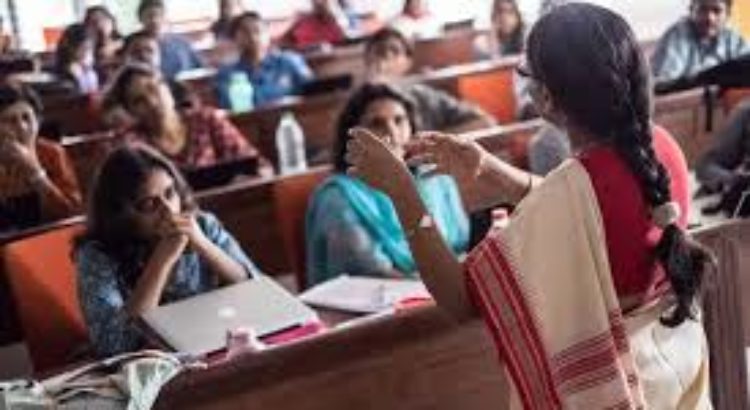Asia/ India/ 03.12.2019/ Fuente: www.brookings.edu.
India has seen a dramatic increase in the capacity of its higher education sector in the last two decades. Enrolment in higher education has increased four-fold since 2001. With a Gross Enrolment Ratio (GER) of 26.3% (AISHE 2018-19), we are close to achieving the target of 32% GER by 2020. However, many important questions such as the quality of Higher Education Institutions (HEIs) and employment of graduates merit further examination.
In this report, we address these questions by examining the enrolment trend and patterns; graduation and employment patterns; and the quality assurance framework for HEIs in India. We also track the policy shifts that enabled this expansion. We offer context to India’s expansion by comparing it to other countries. We also compare the growth of India’s higher education sector to that of China over the last 25 years.
Despite the increasing number of professional colleges, three-year degrees in arts, commerce and sciences remain the most popular programmes as evidenced by high enrolment rates.
- India has seen a rapid expansion in the higher education sector since 2001. There has been a dramatic rise in the number of higher education institutions (HEIs) and enrolment has increased four-fold. The Indian higher education system is now one of the largest in the world, with 51,649 institutions.
- Despite the increased access to higher education in India, challenges remain. Low employability of graduates, poor quality of teaching, weak governance, insufficient funding, and complex regulatory norms continue to plague the sector. India’s gross enrolment ratio (GER) in 2018-19 was 26.3% but still far from meeting the Ministry of Human Resource Development’s target of achieving 32% GER by 2022.
- As the government evaluates proposals to reform the University Grants Commission and implement the recently proposed Draft New Education Policy 2019, this Brookings India report takes a wider view of reforms necessary to respond to challenges facing higher education in India today. It examines the capacity of HEIs with respect to students as well as teachers; governance and accountability; funding and affordability; research and innovation; and, regulatory regime, to create a globally relevant and competitive ecosystem that can produce employable graduates and sophisticated knowledge workers.
- The exponential growth of the sector has been due to the increased demand for higher education. The higher education sector has grown across all levels and disciplines. However, broad trends and patterns in enrolment, graduation and placement suggest that access to higher education continues to remain a challenge, especially at the postgraduate level.
- Given the low proportion of students that go on to pursue postgraduate and doctoral education, a shortage of qualified teachers is a further problem that is plaguing even the best universities in India. High entry barriers, poor incentive structures, stringent tenure rules and rigid promotion practices lead to a limited supply of faculty.
- Faculty shortage, low inputs available for research and inadequate industry linkages amplify the existing limited uptake of good quality independent research in HEIs across all disciplines. We find that while countries like the United States, China and South Korea have invested in research to build a skilled, productive and flexible labour force, HEIs in India, in contrast, lack the culture of independent academic research.
- The higher education sector in India is crippled due to the lack of financial, academic and administrative autonomy granted to institutions. Overall, this has resulted in the poor quality of institutions as well as education. Under the affiliating university model, the supervisory authority for most colleges is the university or a government authority; both lack the capacity to effectively regulate their constituent colleges and hold them accountable. In contrast, autonomous HEIs are at an advantage since they have the power to constitute their own academic councils and make decisions on academic matters.
- In the last three decades, the government has taken a step back from its role as the primary funder of higher education. Union funding for government and government-aided HEIs is skewed in favour of central universities, and state governments spend a lot more than the central government on higher education. While, there is little to no data on how the higher education sector is funded, we do know that household expenditure on higher education is now the biggest source of funding. Private HEIs are funded almost entirely by student fees. Research suggests that the average tuition fee for an engineering degree from a private institution is almost twice as that of a public institution, while private HEIs account for three-fourths of all enrolments.
- Limitedassessment and accreditation capacity of the NAAC and NBA has been a significant barrier in linking the performance of an institution to autonomy and funding decisions. Thus far, NAAC has retained the exclusive power to accredit HEIs, allowing corruption and profiteering to creep into the sector.
- Several proposals, committees and draft policies in the last decade have suggested the need to revamp the University Grants Commission in order to resolve the numerous roadblocks in an over-regulated regime in the Indian higher education sector. The distribution of functions, roles and responsibilities among several agencies and providers has inhibited innovation and creativity, and led to issues with accreditation of HEIs, their autonomy and inadequate funding. Some recent measures—for instance, granting Institution of Eminence status to select HEIs, enactment of IIM Bill 2017, many proposals made under the DNEP19—demonstrate that these issues have been acknowledged and reforming the regulatory regime is non-negotiable.
Fuente de la noticia: https://www.brookings.edu/research/reviving-higher-education-in-india/








 Users Today : 5
Users Today : 5 Total Users : 35460497
Total Users : 35460497 Views Today : 21
Views Today : 21 Total views : 3419379
Total views : 3419379